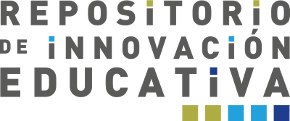Por favor, use este identificador para citar o enlazar este ítem:
https://www.innovacioneducativa.unam.mx:8443/jspui/handle/123456789/5472Registro completo de metadatos
| Campo DC | Valor | Lengua/Idioma |
|---|---|---|
| dc.contributor.author | Koufogiannakis, Denise | |
| dc.contributor.author | Wiebe, Natasha | |
| dc.date.accessioned | 2020-03-03T16:04:09Z | - |
| dc.date.available | 2020-03-03T16:04:09Z | - |
| dc.date.created | 2006 | |
| dc.date.issued | 2006 | |
| dc.identifier.issn | 1715-720X | |
| dc.identifier.uri | http://132.248.161.133:8080/jspui/handle/123456789/5472 | - |
| dc.description.abstract | Objective - The objective of this review was to assess which library instruction methods are most effective for improving the information skills of students at an introductory, undergraduate level, using cognitive outcomes (measuring changes in knowledge). The study sought to address the following questions: 1) What is the overall state of research on this topic? 2) Which teaching methods are more effective? Methods - Systematic review methodology was used. Fifteen databases were searched for relevant articles retrieving 4356 potentially relevant citations. Titles and abstracts were reviewed for relevance. Of those, 257 full articles were considered in-depth using a predetermined inclusion/exclusion form. 122 unique studies met the inclusion criteria and underwent an extensive data extraction and critical appraisal process. 55 of these studies met author defined quality criteria to provide information on the effectiveness of different teaching methods. Of these, 16 studies provided sufficient information to enable meta-analyses using standardized mean difference to be undertaken. Results - The overwhelming majority of studies were conducted in the United States (88%). 79 studies (65%) used experimental or quasi-experimental research methods. Teaching methods used in the studies varied, with the majority focused on traditional methods of teaching, followed by computer assisted instruction, and self-directed independent learning. Studies measured outcomes that correlated with Bloom’s lower levels of learning (Remember, Understand, Apply). 16 studies compared traditional instruction with no instruction, and 12 found a positive outcome. Meta-analysis of the data from 4 of these studies agreed with the positive conclusions favouring traditional instruction. 14 studies compared computer assisted instruction with traditional instruction. 9 of these showed a neutral result, and meta-analysis of 8 of these studies agreed with this neutral result. 6 studies compared self-directed independent learning with no instruction, and meta-analysis of 5 of these agreed that the result was positive in favour of self-directed independent learning. Conclusions - Based on the results of this meta-analysis, there is sufficient evidence to suggest that computer assisted instruction is as effective as traditional instruction. Evidence also suggests that both traditional instruction and self-directed independent instruction are more effective than no instruction. Additional comparative research needs to be done across different teaching methods. Studies comparing active learning, computer assisted instruction, and self-directed independent learning would greatly enrich the research literature. Further studies utilizing appropriate methodologies and validated research tools would enrich our evidence base, and contribute to the growth of knowledge about effectiveness of particular teaching methods. | |
| dc.language | en | |
| dc.rights | Derechos reservados | |
| dc.source | Evidence Based Library and Information Practice, 1(3):1-43 | |
| dc.title | Effective Methods for Teaching Information Literacy Skills to Undergraduate Students: A Systematic Review and Meta-Analysis | |
| dc.type | Artículo | |
| dcterms.bibliographicCitation | Koufogiannakis, Denise y Wiebe, Natasha (2006). Effective Methods for Teaching Information Literacy Skills to Undergraduate Students: A Systematic Review and Meta-Analysis. Evidence Based Library and Information Practice, 1(3):1-43. Disponible en: https://journals.library.ualberta.ca/eblip/index.php/EBLIP/article/view/76/153 | |
| dc.identifier.sinne | MAyRS3 | |
| dc.identifier.url | https://journals.library.ualberta.ca/eblip/index.php/EBLIP/article/view/76/153 | |
| dc.identifier.doi | https://doi.org/10.18438/B8MS3D | |
| Aparece en las colecciones: | Meta-análisis y revisión sistemática | |
Ficheros en este ítem:
No hay ficheros asociados a este ítem.
Los ítems de DSpace están protegidos por copyright, con todos los derechos reservados, a menos que se indique lo contrario.


